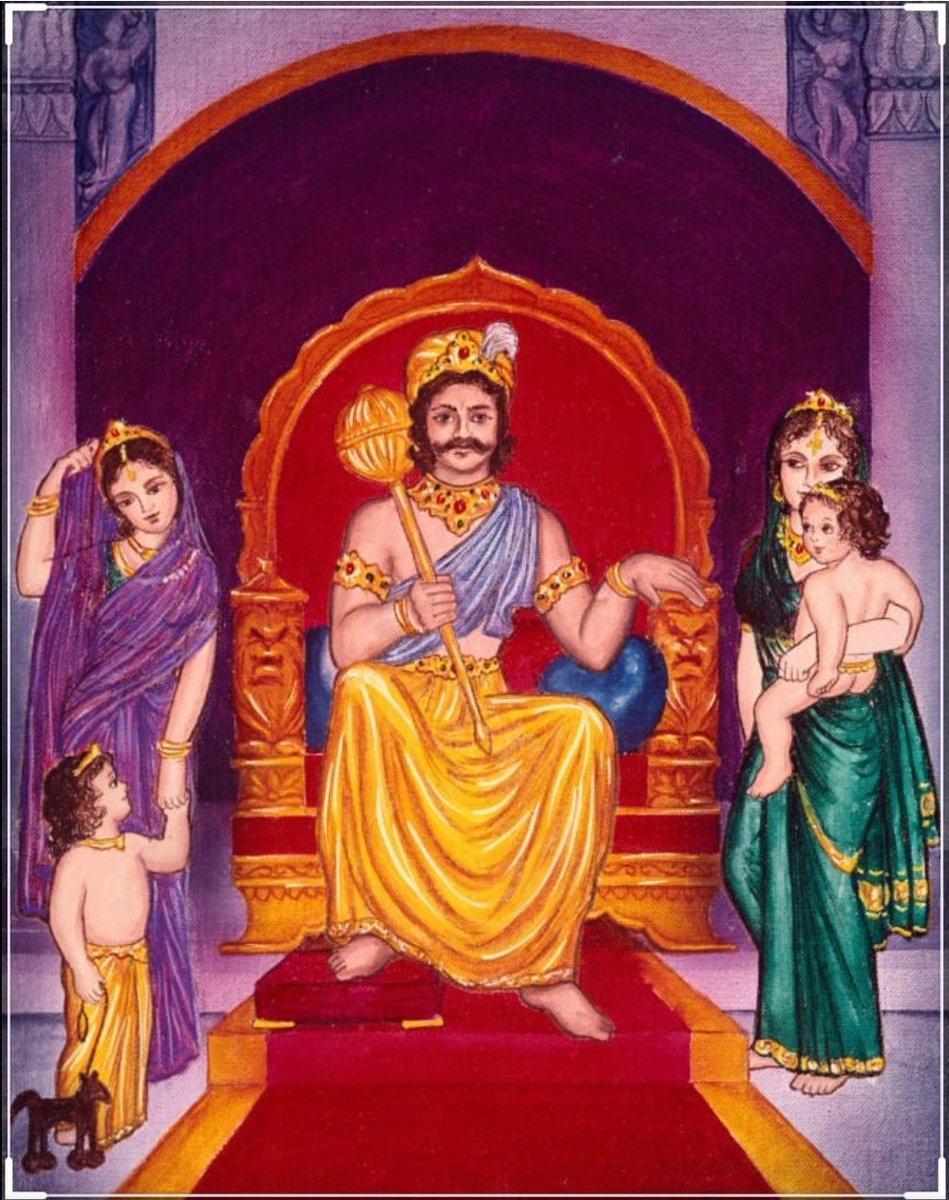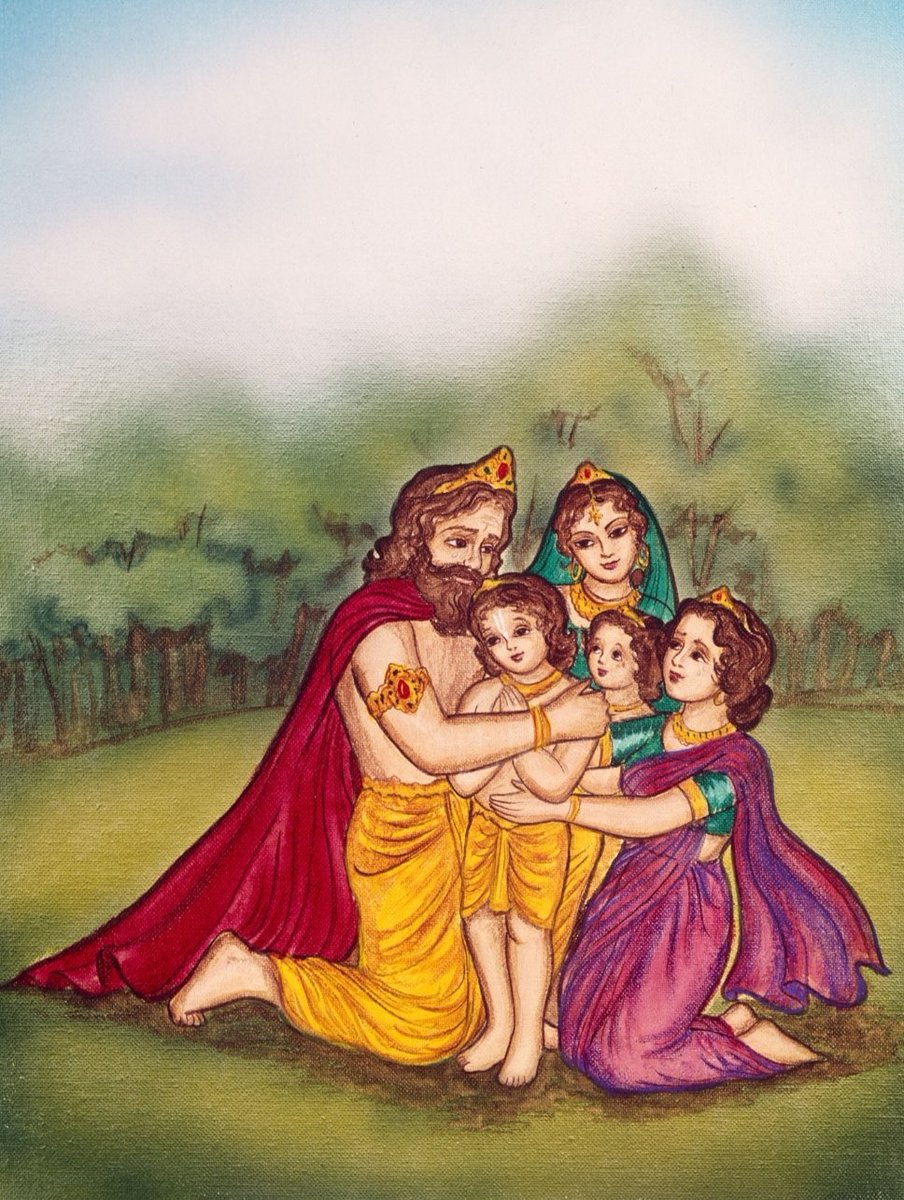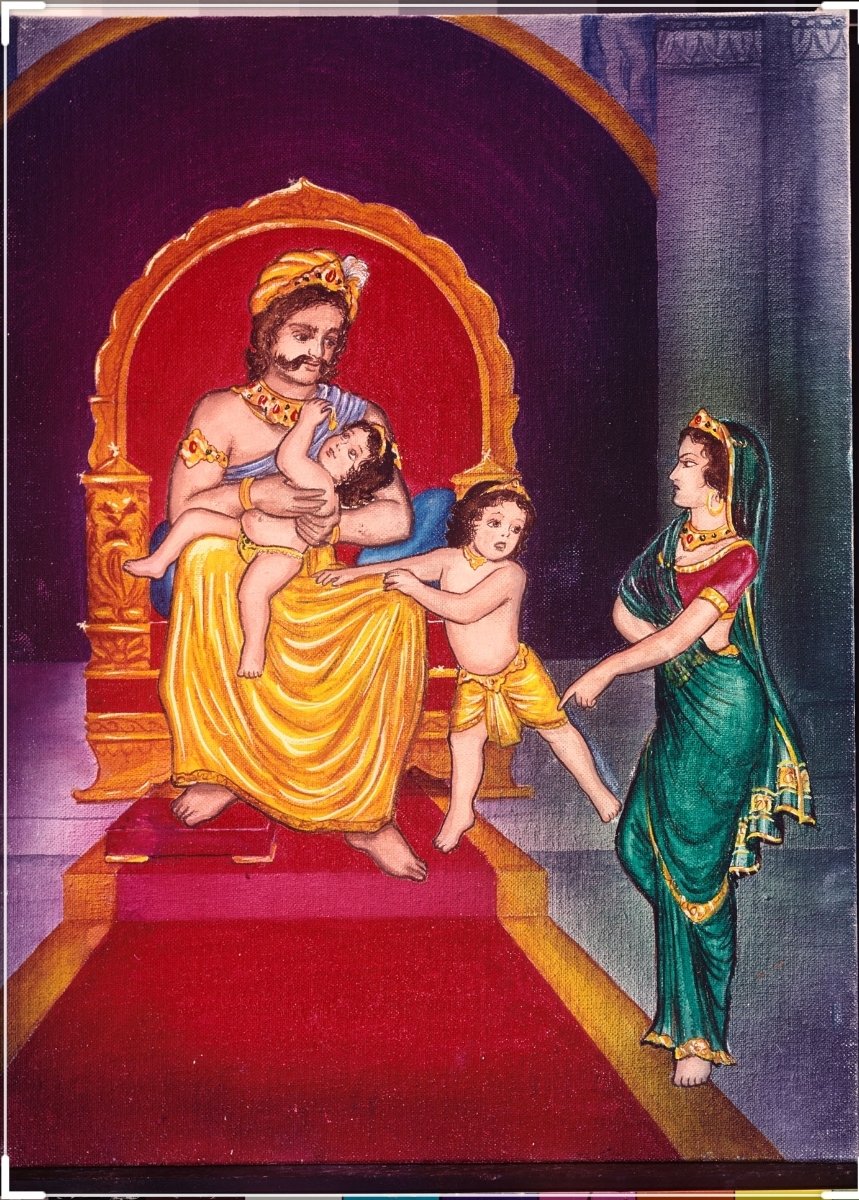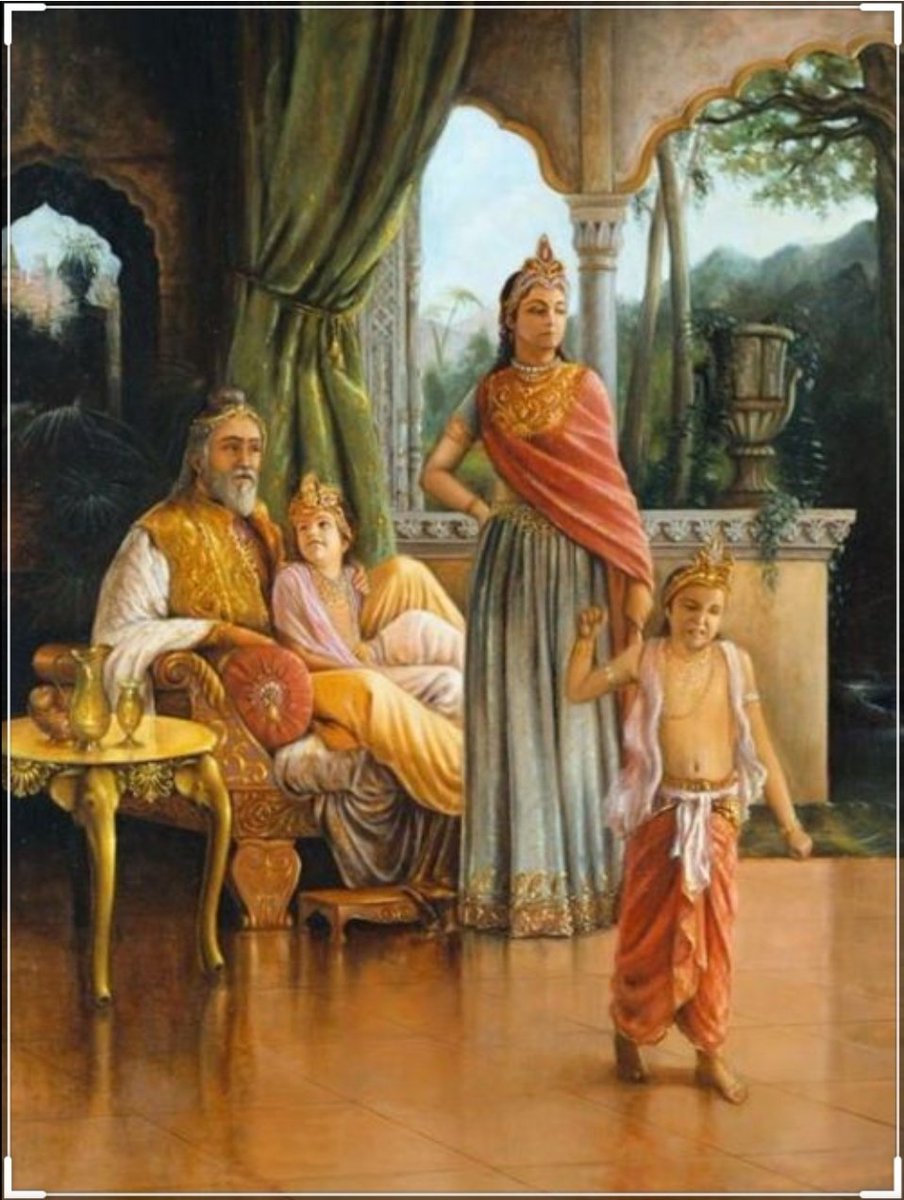
Hinduism is a minority religion in Punjab.
During the Khalistan movement, the minority Hindus and Jains were subjected to several attacks. Hindu and Jain temples were frequently vandalized and desecrated. This thread documents a few instances.
Thread

According to the regional Hindu tradition recorded in the "Survey of Amritsar", Amritsar got its name from Amrit immersed by Lava and Kusha in a pond.

It was used to house the Murtis of Vishnu and Durga which were thrown out from the Parikrama of Harmandir Sahib in 1905.
Because of its presence in Amritsar, it became a frequent target of radicals during the Khalistan movement.








Coins of ancient Yaudheyas dating back to 100 BC have been found at this ancient temple.
On November 21 1983, two bombs were thrown on this temple. A damaged section was later rebuilt by funds collected from devotees

On May 5, 1984 Jain temple in Amritsar was looted and desecrated.

On February 28 of the same year, another Jain temple was looted.

They bombed Hindu fairs like Shivaratri & Ramnavami where Hindus gathered in large numbers to ensure maximum Hindu kiIIings.
Shivala temple of Amritsar was bombed on Shivaratri

More from Bharadwaj
While this might look very trivial at the outset, this is a very major cultural appropriation.
This threads explains the Golden ratio, its history and its modern appropriation
[Thread]
Golden Ratio, Bedrock of Swiss Design, May Have First Emerged in Africa @audreygbennett writeshttps://t.co/bznfZedbFf via @thewire_in
— Siddharth (@svaradarajan) March 17, 2021
What is Golden ratio?
In mathematics, two quantities are in the golden ratio if their ratio is the same as the ratio of their sum to the larger of the two quantities.
If two numbers be designated by a and b (a>b>0), then they are aid to be in Golden ratio if a/b=(a+b)/a
Thus, Golden Ratio is solution to quadratic x2-x-1=0(assuming a to be x and b to be 1 in the same ratio).
This approximates to 1.618033.
Since in a Fibonacci series every number(except first & second) is sum of the previous two, golden ratio approximates ratio of larger/smaller
How is Golden ratio important?
Golden nature is everywhere in the nature. Infact, Golden ratio is called Divine proportion.
According to latest research, universe is governed by Golden ratio.
Universe has a golden ratio that keeps everything in order.
https://t.co/pHqMipG69w

Infact, the Golden ratio of Fibonacci series can be seen everywhere around us in the universe.
The petals of a flower and seed heads follow a Fibonacci series where each consecutive cycle is in golden ratio with the previous one

He had newspapers, books, servants & coolies. He was allowed to walk out & meet others.
He was also allowed Switzerland trips "while technically imprisoned".
Savarkar was locked up in Kalapani & beaten up for 10 years
Jawaharlal Nehru, India\u2019s first prime minister, spent nine years in British jails. Savarkar famously wrote letters appealing to British rulers and was questioned in Gandhi murder conspiracy. Just saying.
— Saba Naqvi (@_sabanaqvi) August 28, 2021
It was only once in his life that Nehru was treated just like any ordinary prisoner.
This was in Nabha Jail for 12 days.
Within 12 days, Nehru's father begged British viceroy.
He wrote an apology & assured that his son Nehru will never enter Nabha.
12 Days v/s 10 Years!
Nehru's jail in Ahmedabad had a badminton court specially built for Nehru and other top Congress leaders.
On his insistence, a library was made accessible to him during prison terms . That is how he could write books while "imprisoned".
A fitness instructor also attended to him
Nehru's jail terms were essential political stunts in building up his image as a great freedom fighter.
However, they seemed more like exotic getaways than real prisons
The 12 day imprisonment of Nehru in Nabha jail was harsh.
When Motilal came to know that his Nehru was locked up in a real jail, he rushed to meet Nehru but was forbidden by the administrator of Nabha.
Then, British viceroy came to the rescue of Nehrus and overruled this order

Your stupid & dishonest verbal gimmicks notwithstanding, the undeniable fact is that Buddha indeed compared Brahmins to dogs & concluded dogs were better.
Even traditional commentary on the verse says "Buddha comes Dogs to Brahmins, and Dogs come out better" https://t.co/1Aks88MSMX

This is Twisted.
— \u092a\u094d\u0930\u0924\u093f\u091c\u094d\u091e (@RamaInExile) April 12, 2021
Buddha telling deterioration in the Brahmins of his time. He don't compared Brahmin to Dogs.
He said "Monks , these 5 ancient Brahmin Practices are now Practiced by dogs ,not by Brahmins ...
Then he goes On elabolating..
Your tweet will create wrong impression https://t.co/Lj50G9hx16 pic.twitter.com/dvrOoI5J9e
To begin with, even the name of the Sutta is "Sona Sutta"( Dog sutta).
But this Sutta has nothing to do with Dogs. It is a rant against Brahmins. Dogs feature only when they have to be compared with Brahmins.
And every comparison concludes that Dogs were better than Brahmins

What is this Sutta about?
It is about Buddha's stereotyping and generalisation against Brahmins.
He begins by saying that Brahmins of his time mated with females of all backgrounds. He compares Brahmin sexual mating pattern with that of dogs.

Here Buddha condemns Brahmins of his time for intermarrying with other varnas/communities and compares them with dogs who mate with every breed.
This is not an innocent comparison. Sexual behaviour of dogs is known for its licentiousness and
This is the reason why words like "k*tti", "bit*h" denoting dogs is used as a grave sexual insult.
Although modern Buddhists flaunt egalitarianism now, for the historic Buddha intercaste marriage was a horror that amounted to licentious social behavior resembling dogs.
Indians had Algebra BEFORE Mμslim prophet & religion was even born.
Here is Bakhshali Manuscript dating back to 3rd century CE. It is an Algebraic treatise. Have you anything like this from the Arabian desert? No, you simply plagiarized Algebra from Indians! https://t.co/cWXRNYMgDt

Muslims gave the world Algebra, so here's a "halal" way to say Merry Christmas to our Christian friends :)#MerryChristmas2020 pic.twitter.com/aLXEw2K2I1
— Qasim Rashid, Esq. (@QasimRashid) December 25, 2020
The Bakhshali manuscript, which has been carbon dated to 3rd century CE, is an ancient Hindu treatise on Arithmetic and Algebra.
The Algebraic problems deal with simultaneous equations, quadratic equations, arithmetic
geometric progressions & quadratic indeterminate equations.

Bakhshali isn't earliest Indian Algebraic treatise. Early Algebra is found in Shulba Sutras dating back to at least 800 BC. Traditional Algebra reached its pinnacle in the works of Aryabhata & Bhaskara.
What makes Bakhshali special is it offers mathematical proof to its theories

It is surprising to see that even after the ancient Indian algebraic treatise has been carbon dated to 3rd century CE by Oxford, they persist with "oh we invented Algebra. It is Halal".
A brief examination of the origins of "Halal Algebra" follows
https://t.co/eFIZ98FDrI

The earliest work of "Arabic Algebra" is the "Al-Kitāb Al-Jabr wal-muqābala" by Al Khwarizmi. The term "Algebra" comes from this book ("Al Jabr").
Before writing his treatise, Al Khwarizmi visited India. His book is a plagiarism from Indian Mathematics and an obvious one at that
More from Religion
You May Also Like
Once upon a time there was a Raja named Uttānapāda born of Svayambhuva Manu,1st man on earth.He had 2 beautiful wives - Suniti & Suruchi & two sons were born of them Dhruva & Uttama respectively.
#talesofkrishna https://t.co/E85MTPkF9W

Prabhu says i reside in the heart of my bhakt.
— Right Singh (@rightwingchora) December 21, 2020
Guess the event. pic.twitter.com/yFUmbfe5KL
Now Suniti was the daughter of a tribal chief while Suruchi was the daughter of a rich king. Hence Suruchi was always favored the most by Raja while Suniti was ignored. But while Suniti was gentle & kind hearted by nature Suruchi was venomous inside.
#KrishnaLeela

The story is of a time when ideally the eldest son of the king becomes the heir to the throne. Hence the sinhasan of the Raja belonged to Dhruva.This is why Suruchi who was the 2nd wife nourished poison in her heart for Dhruva as she knew her son will never get the throne.

One day when Dhruva was just 5 years old he went on to sit on his father's lap. Suruchi, the jealous queen, got enraged and shoved him away from Raja as she never wanted Raja to shower Dhruva with his fatherly affection.

Dhruva protested questioning his step mother "why can't i sit on my own father's lap?" A furious Suruchi berated him saying "only God can allow him that privilege. Go ask him"

I might have a panic attack due to excitement!!
Read this thread to the end...I just had an epiphany and my mind is blown. Actually, more than blown. More like OBLITERATED! This is the thing! This is the thing that will blow the entire thing out of the water!
Tik Tok pic.twitter.com/8X3oMxvncP
— Scotty Mar10 (@Allenma15086871) December 29, 2020
Has this man been concealing his true identity?
Is this man a supposed 'dead' Seal Team Six soldier?
Witness protection to be kept safe until the right moment when all will be revealed?!
Who ELSE is alive that may have faked their death/gone into witness protection?

Were "golden tickets" inside the envelopes??

Are these "golden tickets" going to lead to their ultimate undoing?
Review crumbs on the board re: 'gold'.

#SEALTeam6 Trump re-tweeted this.

@NBA @StephenKissler @yhgrad 1. From Day 1, SARS-COV-2 was very well adapted to humans .....and transgenic hACE2 Mice
1. From Day 1, SARS-COV-2 was very well adapted to humans .....and transgenic hACE2 Mice
— Billy Bostickson \U0001f3f4\U0001f441&\U0001f441 \U0001f193 (@BillyBostickson) January 30, 2021
"we generated a mouse model expressing hACE2 by using CRISPR/Cas9 knockin technology. In comparison with wild-type C57BL/6 mice, both young & aged hACE2 mice sustained high viral loads... pic.twitter.com/j94XtSkscj
@NBA @StephenKissler @yhgrad 2. High Probability of serial passaging in Transgenic Mice expressing hACE2 in genesis of SARS-COV-2
1. High Probability of serial passaging in Transgenic Mice expressing hACE2 in genesis of SARS-COV-2!
— Billy Bostickson \U0001f3f4\U0001f441&\U0001f441 \U0001f193 (@BillyBostickson) January 2, 2021
2 papers:
Human\u2013viral molecular mimicryhttps://t.co/irfH0Zgrve
Molecular Mimicryhttps://t.co/yLQoUtfS6s https://t.co/lsCv2iMEQz
@NBA @StephenKissler @yhgrad B.1.1.7 has an unusually large number of genetic changes, ... found to date in mouse-adapted SARS-CoV2 and is also seen in ferret infections.
https://t.co/9Z4oJmkcKj

@NBA @StephenKissler @yhgrad We adapted a clinical isolate of SARS-CoV-2 by serial passaging in the ... Thus, this mouse-adapted strain and associated challenge model should be ... (B) SARS-CoV-2 genomic RNA loads in mouse lung homogenates at P0 to P6.
https://t.co/I90OOCJg7o




















